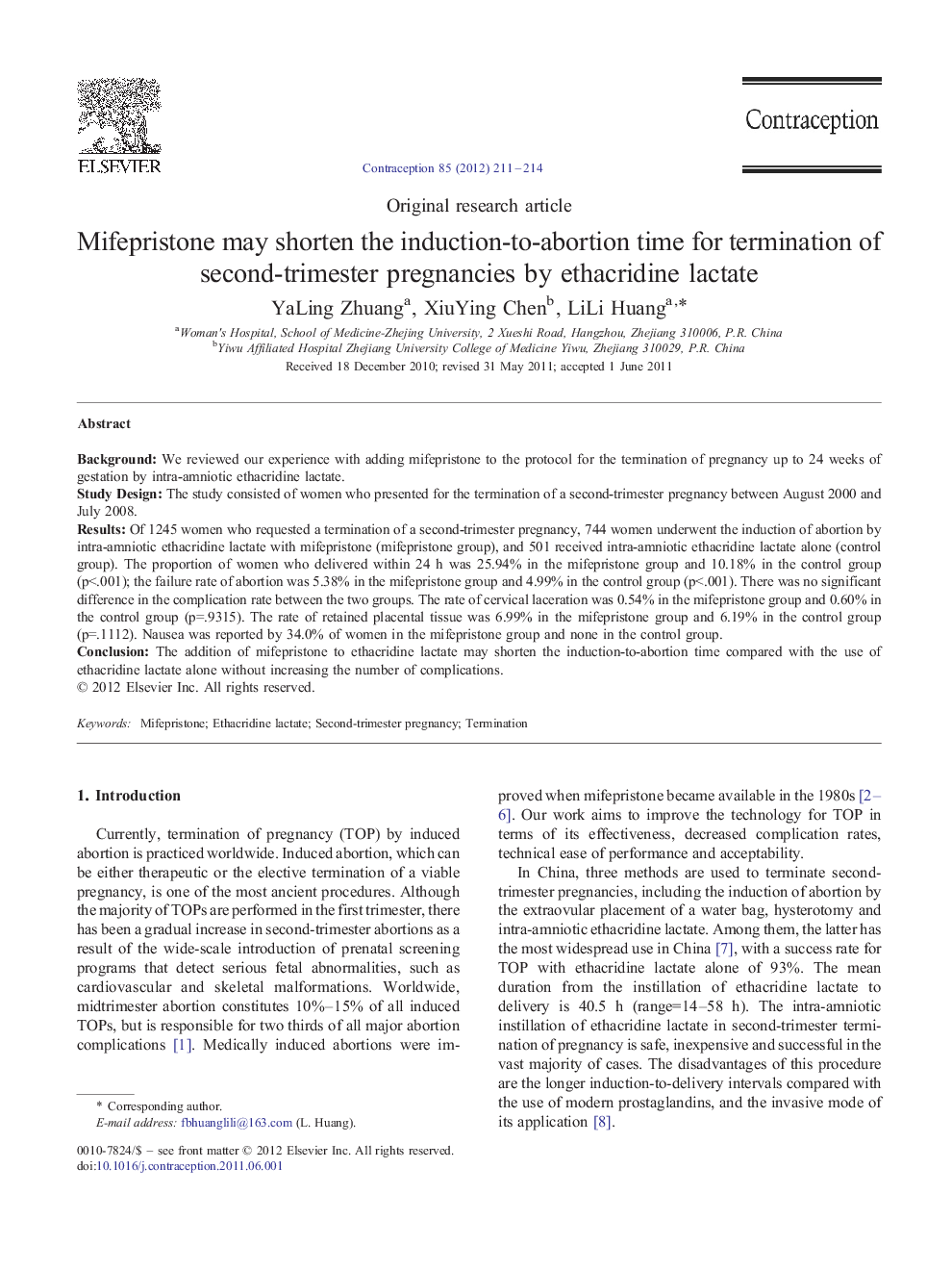| Article ID | Journal | Published Year | Pages | File Type |
|---|---|---|---|---|
| 6171738 | Contraception | 2012 | 4 Pages |
BackgroundWe reviewed our experience with adding mifepristone to the protocol for the termination of pregnancy up to 24 weeks of gestation by intra-amniotic ethacridine lactate.Study DesignThe study consisted of women who presented for the termination of a second-trimester pregnancy between August 2000 and July 2008.ResultsOf 1245 women who requested a termination of a second-trimester pregnancy, 744 women underwent the induction of abortion by intra-amniotic ethacridine lactate with mifepristone (mifepristone group), and 501 received intra-amniotic ethacridine lactate alone (control group). The proportion of women who delivered within 24 h was 25.94% in the mifepristone group and 10.18% in the control group (p<.001); the failure rate of abortion was 5.38% in the mifepristone group and 4.99% in the control group (p<.001). There was no significant difference in the complication rate between the two groups. The rate of cervical laceration was 0.54% in the mifepristone group and 0.60% in the control group (p=.9315). The rate of retained placental tissue was 6.99% in the mifepristone group and 6.19% in the control group (p=.1112). Nausea was reported by 34.0% of women in the mifepristone group and none in the control group.ConclusionThe addition of mifepristone to ethacridine lactate may shorten the induction-to-abortion time compared with the use of ethacridine lactate alone without increasing the number of complications.
